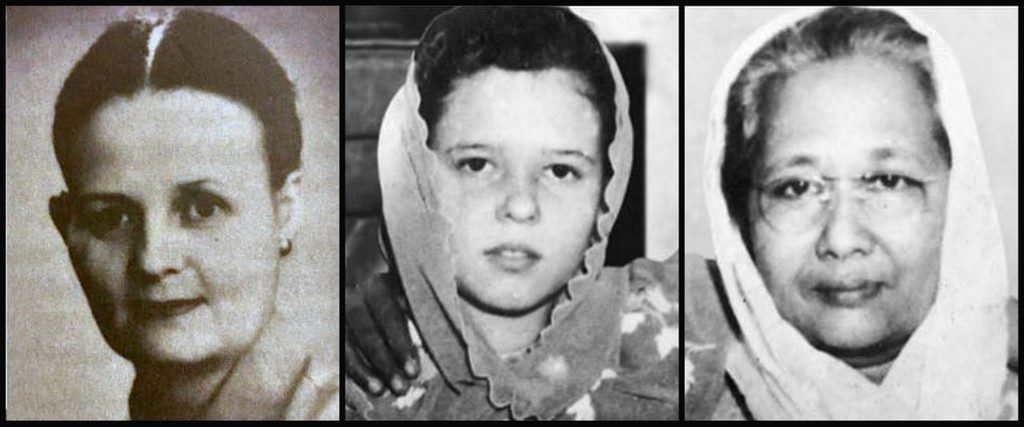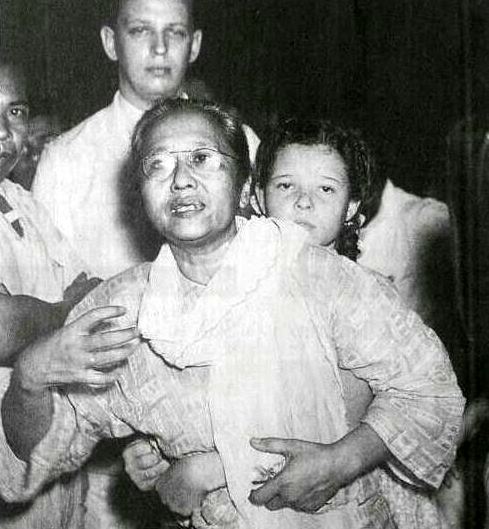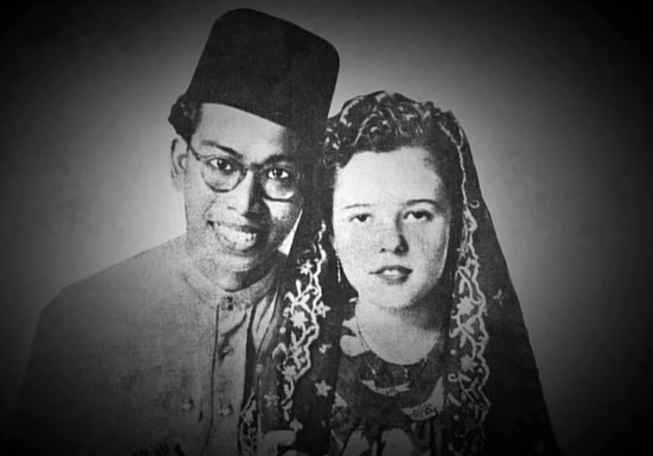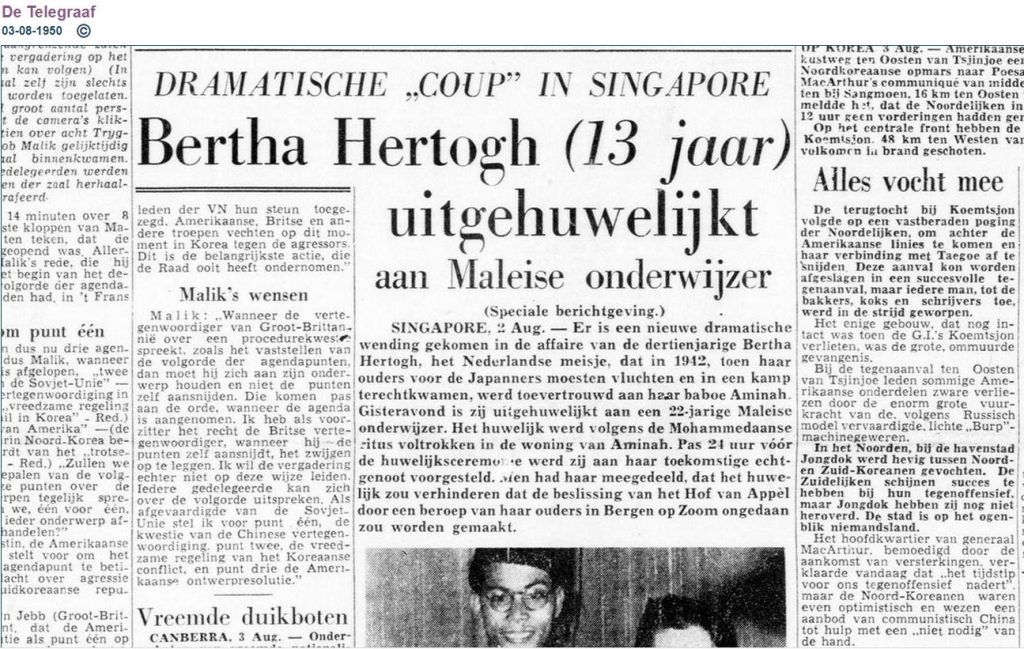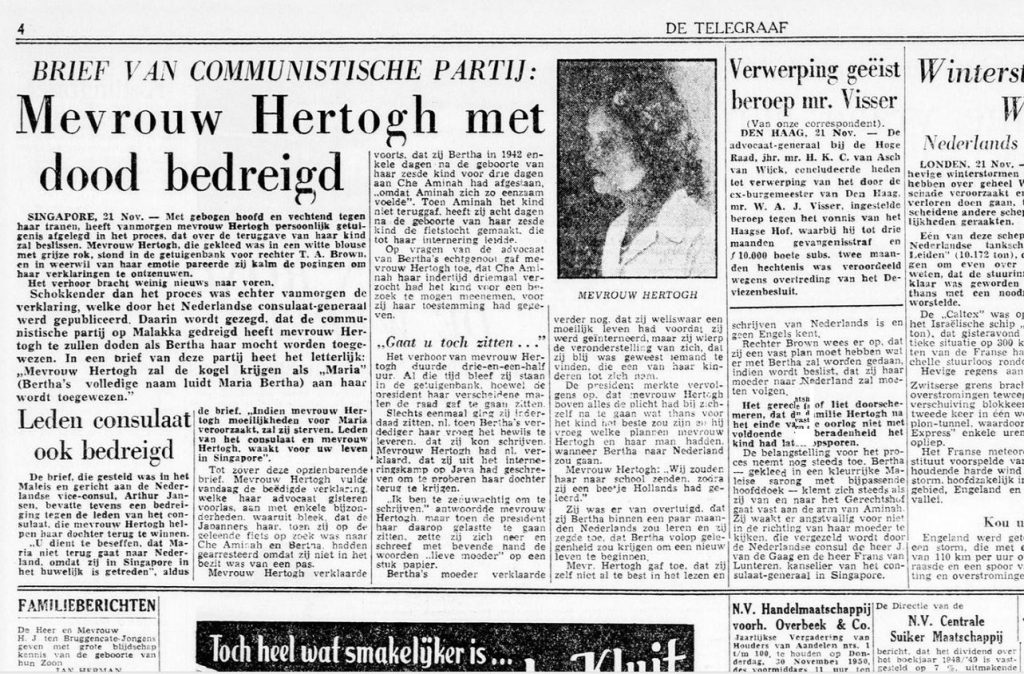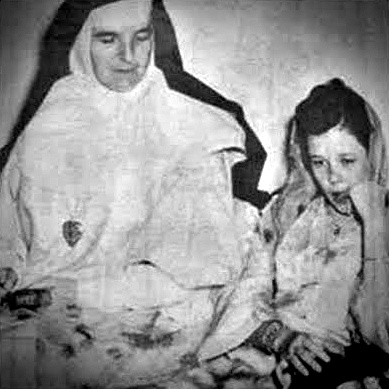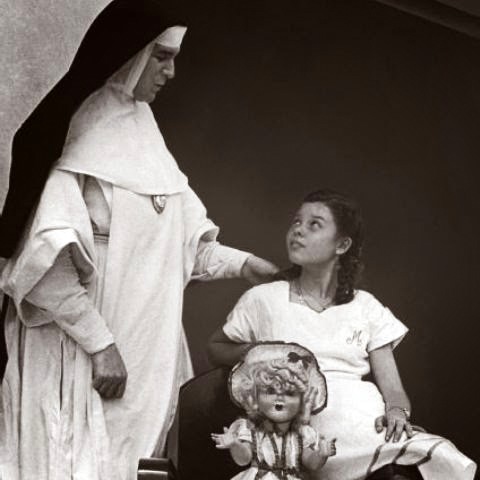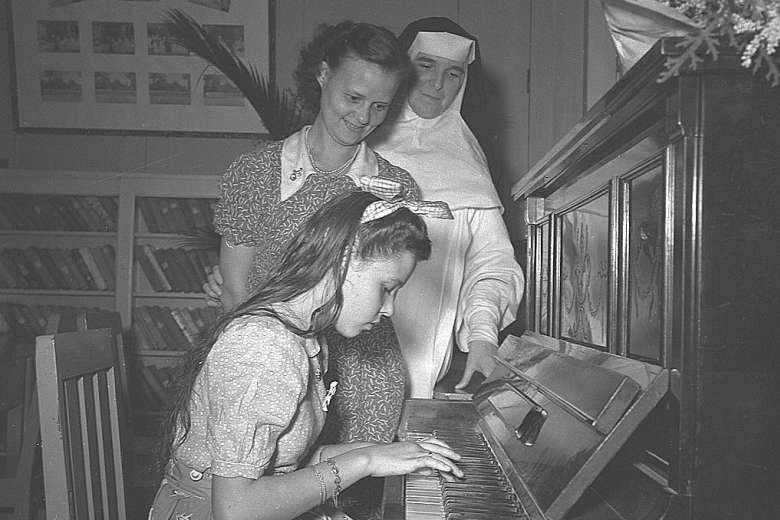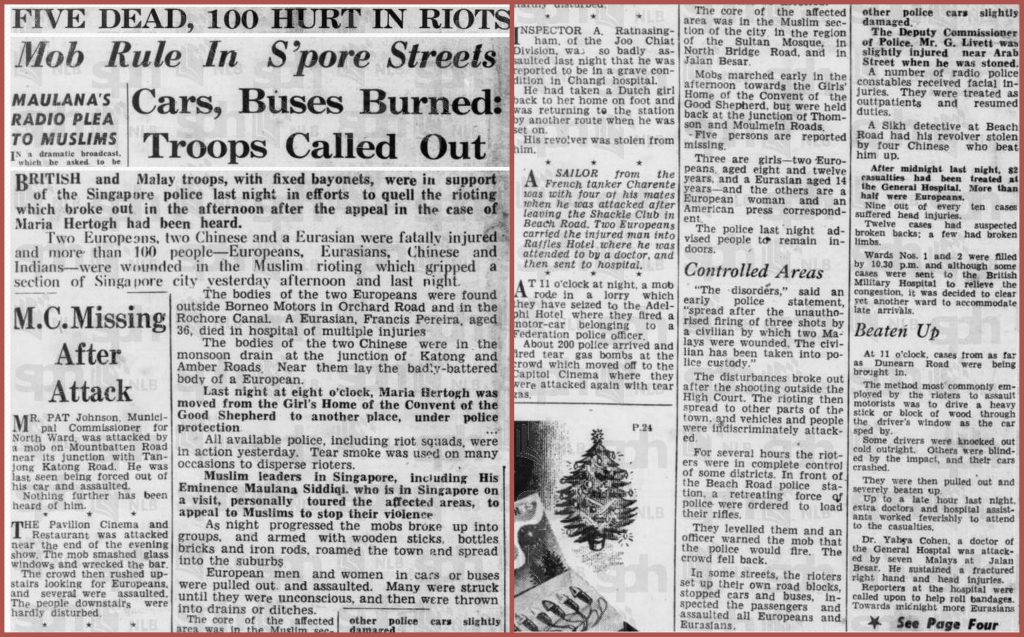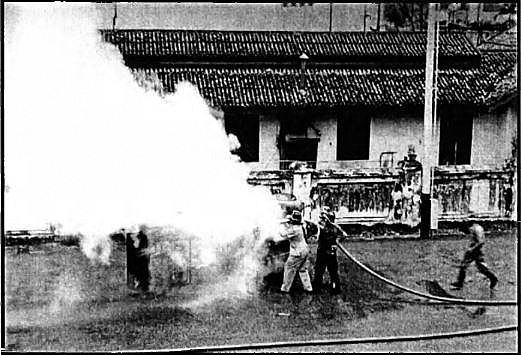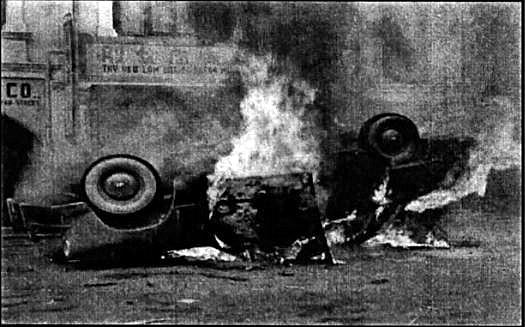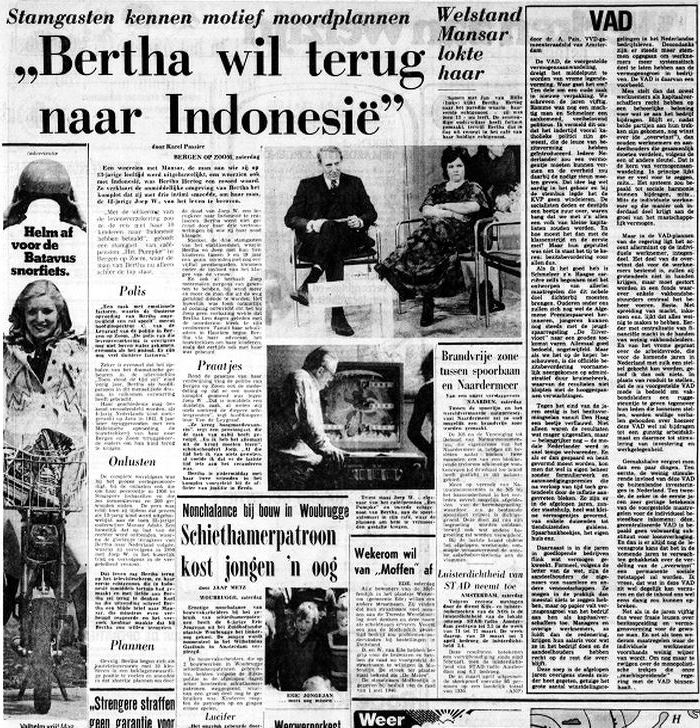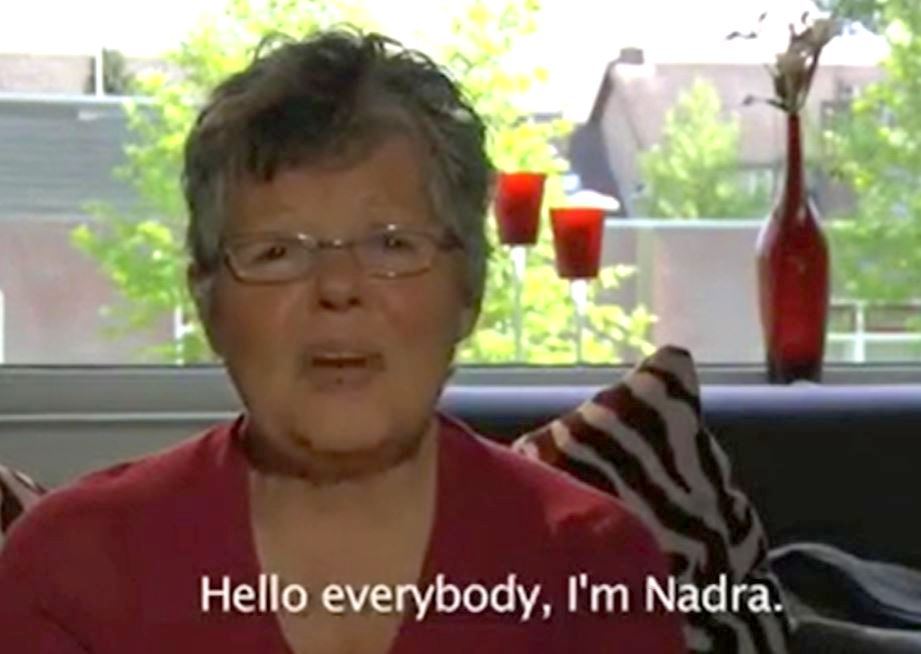Recently I was chatting with my Taiping friend Syed Bakar how we spent our days during the Covid-19 lockdown. He wrote:
I’m reading about the Dutch girl whose parents left her with their maid and took off when the Japs attacked Central Java. She was 13 after the war and married to a Malay school teacher. Her real parents found her and wanted her back. The trial took place in Singapore and the British judge decided in favour of the Dutch parents. This started an anti European riot.
A Dutch girl! The story was new to me. Syed told me that it was world wide news in 1950 and that the name of the girl was Bertha Hertogh. I got interested and decided to write a blog about it. But before starting to search for information, I asked several Malaysian and Dutch friends if they were familiar with the case. None of my Dutch friends, and only some of my ( senior) Malaysian friends knew about her, maybe not surprising as it happened 70 years ago.
A huge lot of information is available. There is a Wikipedia article Maria Hertogh. And in 2014 Channel NewsAsia has broadcast a (dramatised) documentary Nadra (the Malay name of Maria Hertogh). Worth watching. It is now available online. Also several books have been published about her.
Here is Maria/Nadra in 1950 (a screenshot from the CNA documentary)

She was born in 1937 in the Dutch East Indies (now Indonesia) as the third child of Adrianus Hertogh , a Dutch soldier, and Adeline Hunter, of Eurasian descent. A Roman Catholic family, she was baptised as Maria Huberdina (Bertha).
On 8 December 1941 Japan attacked Pearl Harbour and invaded Malaya and the Dutch East Indies. Singapore surrendered on 15 February and Batavia on 9 March. Sergeant Hertogh was taken prisoner of war and transported to a POW camp in Japan. Adeline, 24 year old, was pregnant and expecting her sixth child in December. She and her children moved in with her mother Nor Louise, who had a good family friend, Che Aminah, a Malay-Indonesian lady, well educated and wealthy, without children of her own.
For what happened next, there are two versions.
Adeline’s version: During her confinement, Nor Louise suggested that Che Aminah should take care of Maria for a while. Reluctantly Adeline accepted, but soon after her child was born, she went on a bicycle to take Maria back. Unfortunately she had no travel permit, was caught by the Japanese police and, being an Eurasian, was taken to an internment camp where she had to stay until the end of the war. She asked Nor Louise to bring her children to the camp, but Maria could not be found.
Che Aminah’s version: Adeline had agreed to give Maria to her for adoption. She renamed the girl Nadra and gave her a Malay education. In 1943 she was circumcised, according to Muslim tradition. First they had been living in Java, but after the war, because of the military conflicts in the Dutch East Indies, they moved to Kemaman in Malaya, where she was born herself.
From left to right Adeline, Maria/Nadra and Che Aminah . The pictures were taken in 1950 in Singapore.
Sergeant Hertogh survived the POW camp and was reunited with his family after Japan surrendered, . The search for Maria was fruitless and the family went beck to the Netherlands and settled down in Bergen op Zoom. But they asked the Dutch authorities in Java and Singapore to keep looking for the girl.
In 1949 she was spotted (because of her fair complexion) at a school competition in Kemaman by a British official. He visited Che Aminah, who told him about the adoption, but could not show official adoption papers. The Dutch consulate in Singapore asked her to come to Singapore with Maria, to discuss the situation. On 12 April 1950 Che Amina and Maria traveled to Singapore, probably expecting that the adoption would be formalised.
22 April
It must have come as a shock for her that the Dutch consulate wanted Maria to go back to her biological parents, offering Che Aminah 500 Malayan dollars for “safekeeping” Maria during 8 years. When Che Aminah and Maria refused adamantly and were planning to go back to Kemaman, the Dutch consul on 22 April applied to the High Court to deliver Maria into the custody of the Social Welfare Department. The Chief Justice approved the application the same day, without hearing Che Aminah. On 24 April Maria was admitted to the Girls Homecraft Center in York Hill.
19 May
The court session to decide about the custody took place on 19 May. Che Aminah stated that it was an adoption, supported by Adelene Hunter’s brother Soewaldi. Maria wanted to stay with Che Aminah. The Dutch consulate, representing the parents had supplied information about Dutch adoption laws. After a hearing that took only 15 minutes , the Chief Judge ruled that Maria must be returned to her biological parents.
The custody case of a pretty Western Christian girl, raised in a Malay Muslim environment, had aroused a lot of public interest. Many reporters were waiting outside the Supreme Court. A car from the Dutch Consulate was waiting to take Maria away, but she refused to enter. After emotional scenes it was decided that Maria should go back to the York Hill center.
Actually the Dutch Consulate had already booked accommodation on the steamship Sorriento, due to leave Singapore on 23 May. But on 22 May the lawyers of Che Aminah filed an appeal against the judgement of the Supreme Court. Until this appeal was heard in court, Maria had to stay in the Girls Homecraft Center, where she was treated well. Che Aminah could visit her once a week. Twice she was accompanied by a young Malay man, Mansoor Adabi.
28 July
The appeal proceedings started on 12 June and the Appeal Court decided on 28 July unanimously to set aside the orders made by the Chief Justice on 22 April and 19 May. Because of procedural objections: Che Aminah had not been consulted and the Dutch Consulate was not formally representing the Hertogh family. Meaning that Maria came again under the custody of Che Aminah. Overjoyed she fetched Maria from the Girls Homecraft Center, her temporary home for more than three months.
1 August
A few days later, on 1 August, Maria, 13 years old, married Mansoor Adabi, 22 years old. They had met a few times, during her stay in the Girls Homecraft Center, and fallen in love. According to Muslim law the marriage was allowed, as she had reached puberty, although also Muslims had their doubts about the desirability of such a marriage. According to Dutch law the marriage was illegal.
In the Netherlands it was frontpage news. Here is de Telegraaf of 3 August 1950
It is a long article, generally well documented, explaining that the Appeal Court had set the original orders aside because of procedural errors. Here is a translation of the first part.
Dramatic “coup” in Singapore. Bertha Hertogh (13 years old) married off to a Malay teacher.
A new dramatic turn has taken place in the affair of thirteen-year-old Bertha Hertogh, the Dutch girl, who was entrusted to her babysitter Aminah in 1942, when her parents had to flee the Japanese and ended up in a camp. Last night she married a 22-year-old Malay teacher. The marriage took place in the home of Aminah according to the Mohammedan rite. She was introduced to her future husband only 24 hours before the wedding ceremony. She had been informed that the marriage would prevent the decision of the Appeal Court from being overturned by an appeal from her parents in Bergen op Zoom.
Of course Che Aminah was not a “baboe” (babysitter). And there was no doubt about the real affection between the two, although Che Aminah may have thought that the marriage would solve the custody problem, as Maria was now in the custody of Mansoor.
But the marriage was a mistake, because it changed a “simple” custody case into a Religion and Race issue, aggravated by colonial and anticolonial sentiments
Because the 28 July judgement didn’t settle the custody issue, of course there would be a new court case. It started with a request of the Hertogh’s to Che Aminah and Mansoor to return Maria by 10 August, failing which legal action would be taken. As Che Aminah and Mansoor felt safe by the marriage, they didn’t respond. On 26 August a lawsuit was started by the Hertogh family against Che Aminah, Maria and Mansoor.
In Singapore a support fund was started by the Muslim community, receiving donations from all over the Muslim world. Also in the Netherlands money was collected for the Hertogh family, to enable them to go to Singapore to attend the court hearings.
20 November
The court hearings started only on 20 November. There were now two issues. Was the marriage legal and who had custody of Maria.
Here is a Telegraaf report about Adeline Hertogh’s testimony on 21 November. Apparently she and consulate staff had been threatened with death by the communist party of Malacca. The emotions were running high. Keep in mind that the Malayan Emergency had started in 1948 and in 1949 the Netherlands had reluctantly accepted the independence of Indonesia.
2 December
The verdict came on 2 December: the marriage was invalid because Maria was still a Dutch citizen where marriage at the age of 13 was illegal and custody was going to the Hertogh family, because the father had never given his consent for adoption. The judge ordered that Maria should be handed over to her mother immediately.
Again emotional scenes, Maria crying, Aminah fainting, Mansoor promising that they would appeal. Outside the court the police held back a crowd of hundreds of people. A car brought Maria to the Roman Catholic Convent of the Good Shepherd, where she was going to stay until the appeal was heard. Adeline Hertogh later joined her there.
The Dutch Consulate considered the convent more convenient, but it would have been better if she had gone back to the “neutral” Girls Homecraft Center. Although public was not allowed inside the convent, reporters and photographers managed to talk with Maria and take photos.
For the Muslim supporters of Che Aminah this was a provocation, Within a few days the Nadra Action Committee was created under the leadership of Karim Gani, a Muslim political activist. On 8 December he held a speech at the Sultan Mosque in which he mentioned jihad as a final resort.
11 December
The appeal hearing was on 11 December at the Supreme Court. From early morning crowds had gathered around the court, carrying flags and banners.
The court threw out the appeal within a few minutes, confirming to the crowd that the colonial legal system was biased against Muslims.
Riots erupted almost immediately, mainly directed against Europeans and Eurasians. It was only on 13 December that the authorities got back control. A two week curfew followed. Here is the frontpage of the Straits Times of 12 December. Also two photos of firemen and burning vehicles.
Eighteen people, including seven Europeans and Eurasians, were killed. 173 others were injured. Two buildings had been burnt and 119 vehicles were damaged.
On the evening after the judgment Maria could not go back to the convent because the rioters tried to attack it. York Hill was an option but finally she was sent to pass the night on Saint John’s Island, four miles south of Singapore. The next day Maria and her mother flew back to Schiphol airport, where another crowd welcomed them.
And here is her welcome in Bergen op Zoom.
Aftermath
As you may expect, after such a traumatic youth, life would not always be easy. At first Maria could not leave the house in Bergen op Zoom, it was guarded by the police because the authorities were worried about a possible kidnapping. A nun visited her daily to teach her Dutch language. Later she went to a catholic school. The relationship with Adeline remained strained.
In 1955, 18 year old , she married and had 10 children. She helped her husband in a bar. She kept longing for Malaysia and Che Aminah. In 1975 a TV program was broadcast on Dutch TV about her. It included interviews with people in Kemaman and also with Mansoor Adabi, now happily married. Did it break her? She got involved in a weird plot to kill her husband, but it was foiled in time. Not surprisingly she divorced.
She married twice more and in 1998 visited Kemaman, but both Che Aminah and Mansoor had passed away already.
Maria Hertogh died in 2009, 72 years old, from leukemia
A few months before her death, she made a statement. Click on the photo to listen.
Searching information for this post, I came across the book Tangled Worlds, published in 1980 by Tom Eames Hughes. He was head of the Singapore Social Welfare Department in 1950 and directly involved. Very readable, unbiased, and mostly firsthand knowledge. Available as e-book.

